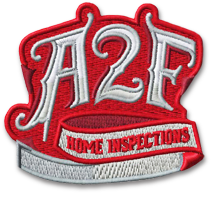Smoke detectors help keep your home and family safe from potential fire hazards. By sounding an alarm, they warn your family of the danger of fire. Proper smoke detector placement and regular maintenance are essential to guarantee their effectiveness.
Placement of Smoke Detectors in a Home
1. General Smoke Detector Placement
Install at least one smoke detector on every level of your home, including the basement and inside each sleeping area. Place a device in the hallway outside the bedrooms to provide early warning in case of a fire while your family is asleep.
2. Keep the Devices Away from Drafts
Avoid placing smoke detectors near windows, doors, or HVAC vents, as drafts can interfere with their ability to detect fire. Smoke detectors work best when the air is relatively still, allowing the sensor to detect smoke particles quickly.
3. Ceiling or Wall Mount Placement for Smoke Detectors
Mount smoke detectors on the ceiling or high on the wall for optimal performance. Ceiling mounting is preferable, as smoke rises and will trigger the sensor more efficiently. If you need to install the device on the wall, place it between four and twelve inches from the ceiling.
4. Smoke Detector Placement in the Kitchen
It is important to have a smoke detector in the kitchen. Unfortunately, annoying false alarms while cooking are common. Install smoke detectors at least 10 feet away from cooking appliances to prevent this from happening.
5. Test the Devices Regularly
Test each smoke detector at least once a month to verify they are functioning correctly. Press the test button to make sure the alarm will sound.
6. Change Batteries Annually
Replace the batteries in your smoke detectors at least once a year or sooner if you hear a chirping sound. Choosing a specific date, such as during daylight saving time, makes remembering easier.
7. Vacuum Regularly
Keep your smoke detectors clean by vacuuming or dusting them regularly to remove dust and debris that may interfere with their operation. Don’t paint your smoke-detecting devices, as this can impair their ability to sense smoke and fire.
8. Replace Detectors Every 10 Years
Smoke detectors have a limited lifespan, usually around ten years. After this period, their sensors become less sensitive, reducing their effectiveness. Replace the devices with new ones to ensure that they work correctly.
9. Interconnected Detectors
For enhanced safety, install interconnected smoke detectors. When one detector senses smoke, all linked detectors in the home will sound, providing an early warning throughout the house.
These simple tips ensure your smoke detectors are correctly placed and well-maintained. Investing a little time and effort into smoke detector placement and maintenance protects your home and loved ones from fire emergencies.
Attic to Foundation provides home inspections to customers in the greater Atlanta area. Contact us to schedule our services.

